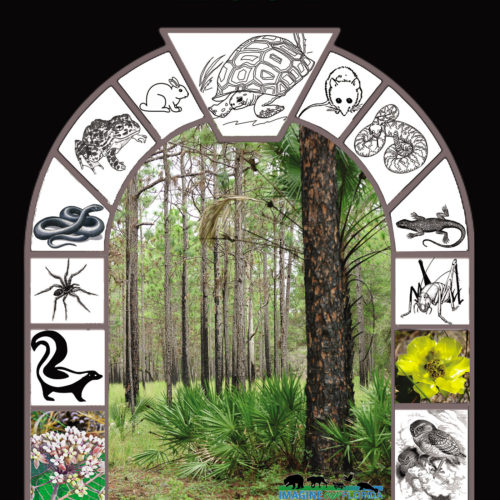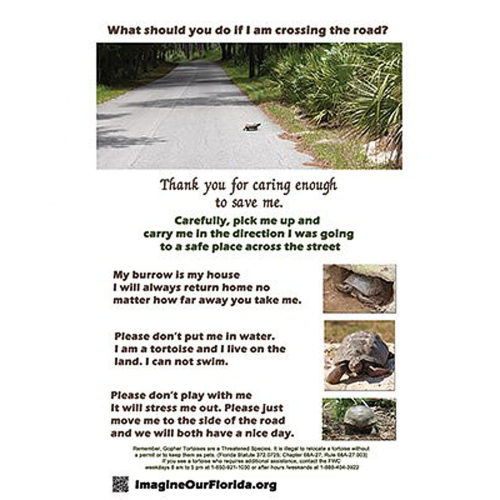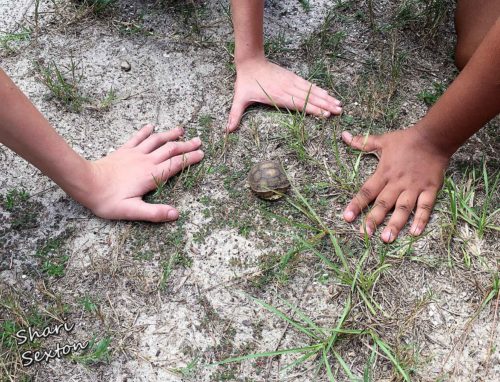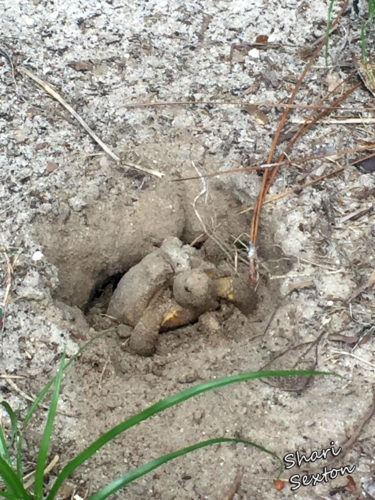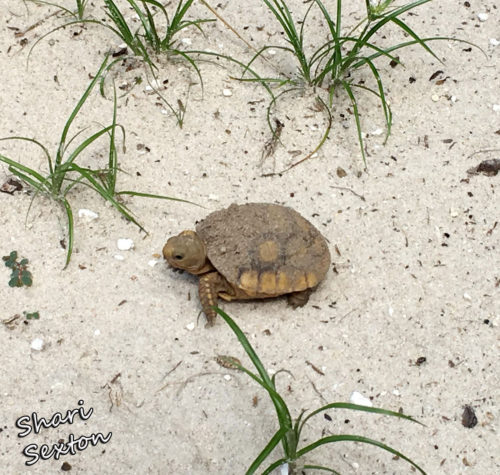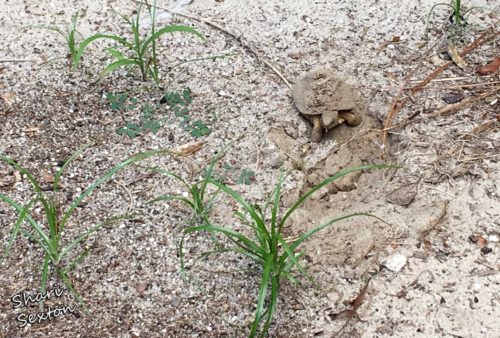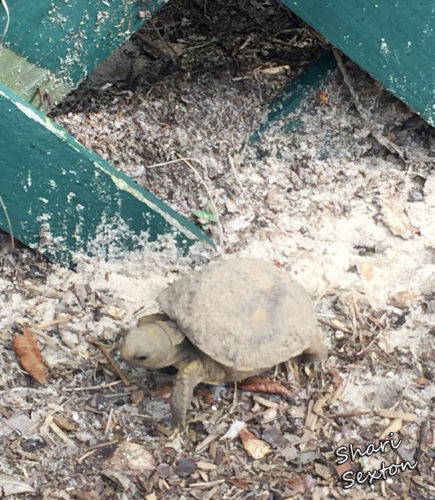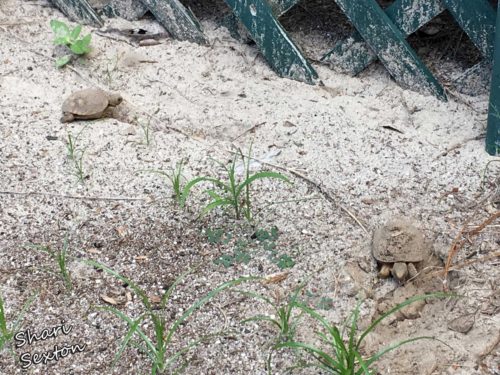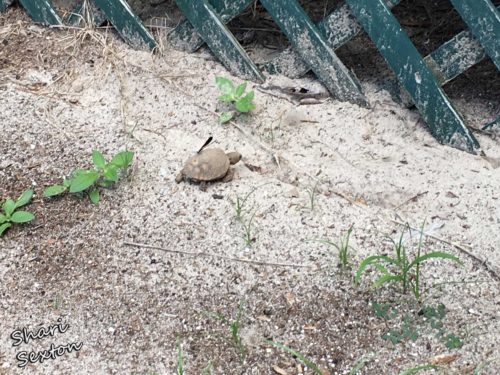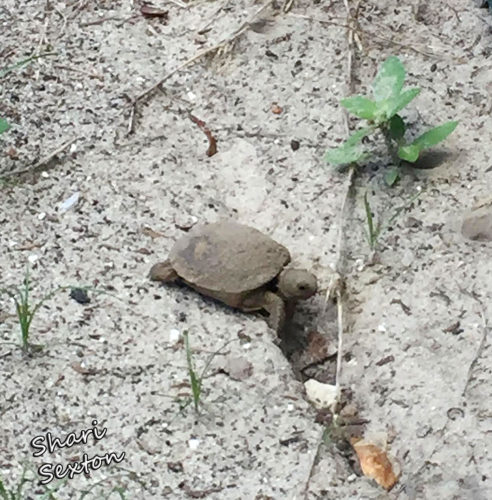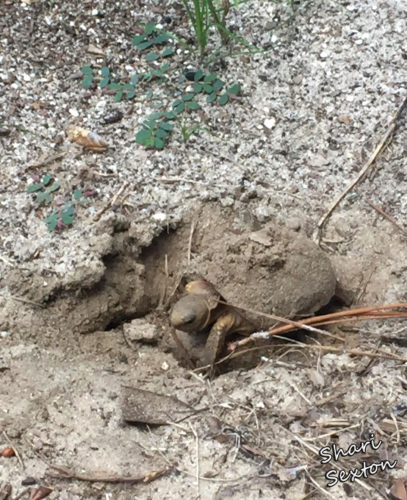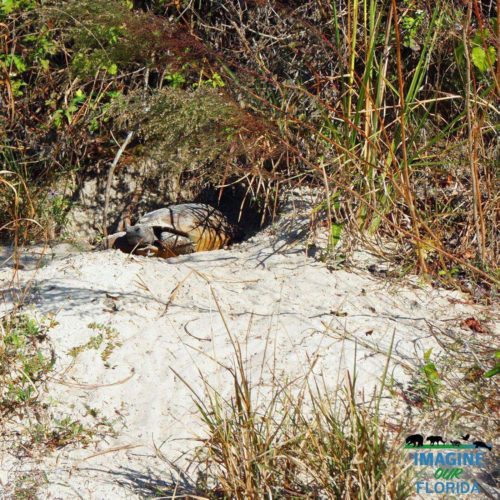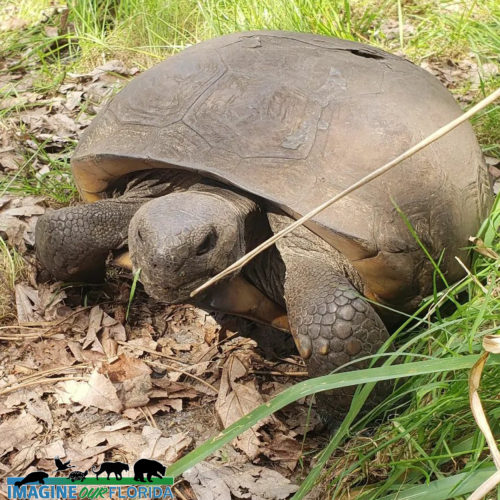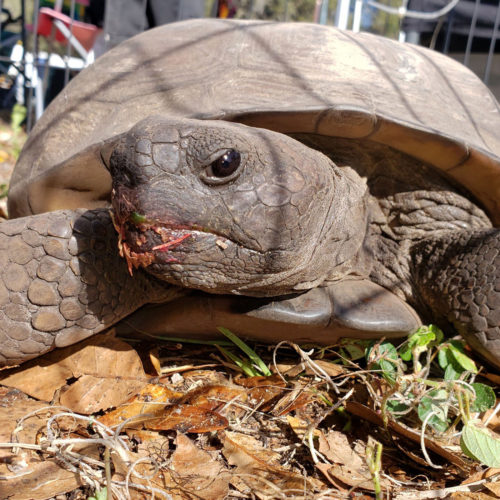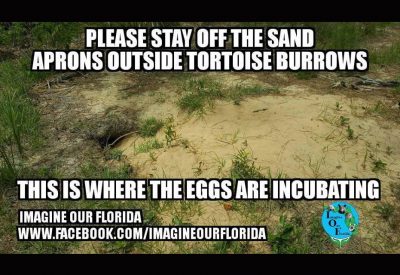
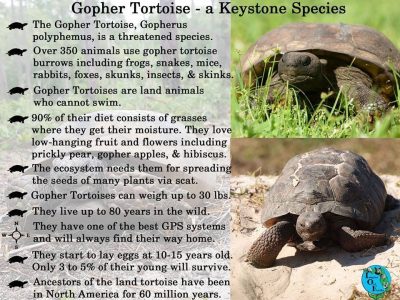
THE GOPHER TORTOISE – (GOPHERUS POLYPHEMUS) – A KEYSTONE SPECIES
The gopher tortoise is a keystone species in the state of Florida. The term keystone is derived from the keystone in a stone arch. Positioned at the top of the arch, if the keystone fails, the arch collapses. Gopher tortoises, a land species, are the keystones in the ecosystems they inhabit. There are over 300 species of animals that rely on the gopher tortoise for survival. Some species, including the Florida mouse and gopher frog, are commensal. Tortoise burrows provide needed shelter from the elements and wildfire for many animals. Abandoned tortoise burrows serve as places for species such as fox and burrowing owls to make their homes.
Gopher tortoises are uniquely adapted to life in Florida’s pine forests and other well-draining areas. Their elephant-like feet help them navigate the sandy soil, and their shovel-like front feet enable them to dig large burrows. They are herbivores, feeding on a large variety of plants found on the forest floor. Their feeding behavior keeps the forest floor clear and open, and their feces spread seed.
Gopher tortoises depend upon well-draining soil to dig their burrows. This same well-draining soil provides prized locations for humans developments. Loss of habitat, road mortality development, fire suppression, and dogs pose threats to tortoise populations. The state of Florida listed the gopher tortoise as a threatened species affording the tortoise some protections.
If you see a Gopher Tortoise crossing the road:
-Safely remove the tortoise from the road by moving the tortoise in the direction he/she was heading. Release the tortoise in the grass or a wooded area on the side of the street.
-DO NOT put a tortoise in water. Tortoises, unlike turtles, can’t swim.
-DO NOT try to relocate a tortoise. Gopher tortoises have an amazingly strong homing instinct and will try their best to return to their home burrows. This puts them at greater risk for road mortality, predation as they lack the protection of a burrow as they wander, and exposure to the elements. Females have also demonstrated nest-guarding behaviors. Removing a female from her territory during nesting season can negatively impact the survival rate of the hatchlings. (Gorsse et al. 2012)
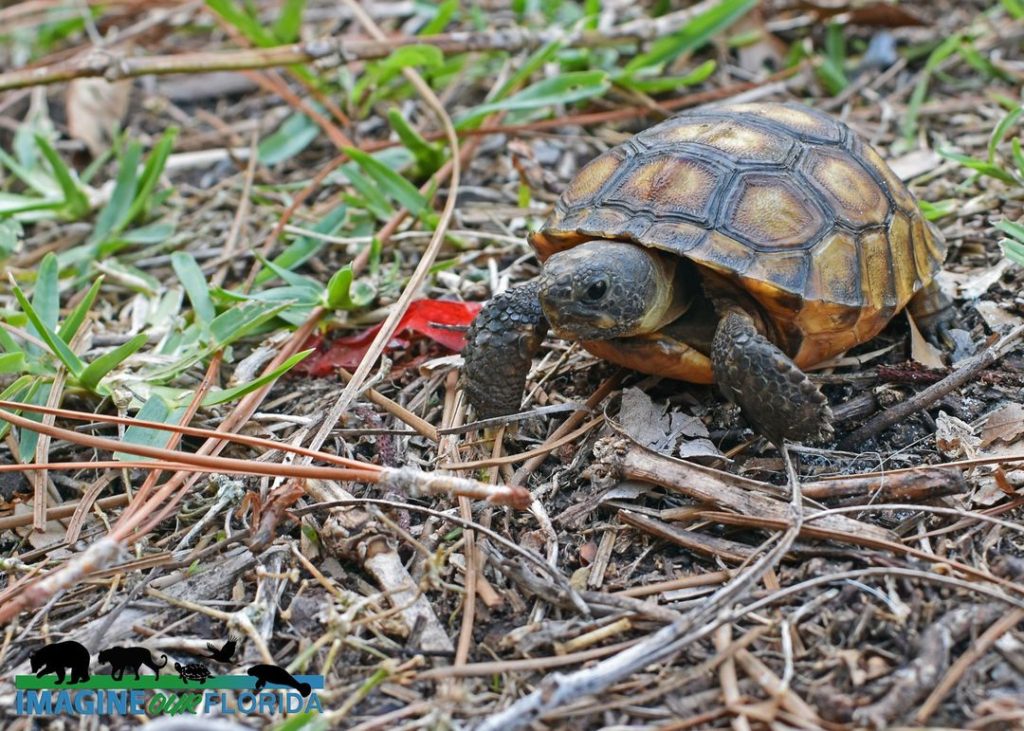 -DO NOT handle a gopher tortoise beyond the length of time it takes to get them across the street to safety. A study found that brief handling did not cause a stress reaction but handling for more than a few moments caused stress hormones to increase greater than 200-fold. (Currylow et al. 2017.)
-DO NOT handle a gopher tortoise beyond the length of time it takes to get them across the street to safety. A study found that brief handling did not cause a stress reaction but handling for more than a few moments caused stress hormones to increase greater than 200-fold. (Currylow et al. 2017.)
Remember, gopher tortoises are a threatened species. Therefore, it is illegal to relocate a tortoise without a permit or to keep them as pets.
(Florida Statute 372.0725; Chapter 68A-27; Rule 68A-27.003)
If you see a tortoise that will require additional assistance, contact the FWC weekdays from 8 a.m. to 5 p.m. at (850) 921-1030 or after hours or on the weekends at (888) 404-3922
With so much against them, these amazing animals have managed to survive for 60 million years. When we learn to #ConnectRespectCoexist and advocate for environmental stewardship on their behalf, we will do our part to assure Gopher Tortoises will be a part of Florida’s ecosystems for many years to come.
Celebrate Gopher Tortoise Day on April 10th. Gopher Tortoises are considered a Keystone Species. As herbivores, Gopher Tortoises disperse seed through their scat that. More than 350 species share their burrow for protection from the weather, fires, and high temperatures. These animals include indigo snakes, rattlesnakes, skunks, gopher frogs, wolf spiders, and burrowing owls. The cover art depicts an arch with a keystone at the top. If the keystone is removed, the arch will collapse. Likewise, if the Gopher Tortoise is removed from its habitat, the ecosystem will collapse.

